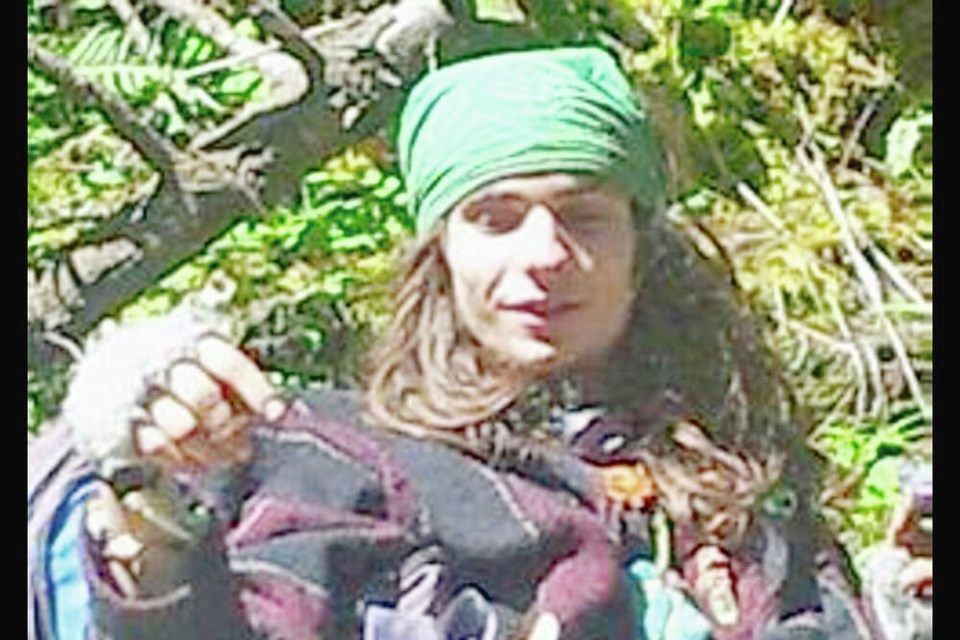A Mill Bay man killed by police six years ago would have been in a “very disturbed state” based on the multiple hallucinogenic drugs in his system at the time of his death, a forensic toxicologist said Wednesday.
Dr. Graham Jones was testifying on the second day of a coroners inquest into the death of 27-year-old Christopher Bloomfield, who was fatally shot by police on Nov. 10, 2018.
An analysis of Bloomfield’s blood taken from his chest cavity after his death showed he had at least four substances with hallucinogenic properties in his system, including ketamine, LSD, psilocybin and a PCP analog.
“They can all cause an individual to basically hallucinate in the sense that inside their head, what they’re seeing is something that most of us would think is not real. It would give them a false impression of the reality that they’re in,” Jones said.
Other drugs in Bloomfield’s system, such as cocaine, can cause psychosis, and together, the combination of substances would have affected his understanding of what was going on around him, Jones said.
The inquest heard Tuesday that before Bloomfield was shot, his mother had gone to the Shawnigan Lake RCMP detachment to report that her son was delusional, believed he was channelling the devil, and was talking about ascending to another plane with her.
Marilyn Bloomfield, who has since died, told police her son had pushed her into a hutch in the mobile home they shared at Cedar Creek Mobile Home Park, injuring her back, and tried to drug her.
Officers involved in the shooting testified Tuesday that Marilyn Bloomfield also said her son had threatened to kill himself if she went to the police.
Three officers went to the mobile home in an attempt to arrest Bloomfield for assault and for administering a noxious substance. When officers knocked on the door and said he was under arrest, Bloomfield retreated into the home, Const. Dylan Clarkson said Tuesday.
Within about 20 seconds of two officers entering the mobile home, Bloomfield was shot multiple times after a failed attempt to use a Taser to incapacitate him.
Clarkson previously testified that he and Sgt. Donald Gaven fired on Bloomfield after he advanced on Clarkson with a knife, making stabbing motions and nicking Clarkson’s hand.
Bloomfield was shot in the abdomen and chest, resulting in fatal injuries to his heart and liver, Dr. Eric Bol testified.
He suffered between five and seven gunshot wounds, Bol said.
“Were these life-threatening wounds survivable?” inquest counsel Steve Liu asked.
In general, the more promptly someone receives medical attention, the more likely they are to survive, Bol said, but Bloomfield’s injuries were “very, very significant.”
“Even if this person had sustained these injuries while lying on the bed of an operating table with a trauma surgeon standing by and received immediate therapy, this person may still have died of these injuries,” he said.
Friends have described Bloomfield as a passionate advocate for the use of psychedelics as a form of healing who considered himself similar to a shaman.
Shortly before his death, he had started experimenting with a PCP analog that concerned his friends, and he was in a frantic state the day he was killed, saying a friend was possessed and trying to exorcise him with an object meant to ward off demons, close friend Kyle Wadelius previously testified.
A psychiatrist who worked with Bloomfield for 10 years described the year of his death as a turning point, saying he had started to gain insight into the impact of his drug use and take more responsibility for his actions. Bloomfield was hospitalized on several occasions for psychosis and suicidal ideation.
“He was a really loving human being and you couldn’t help but really enjoy him and like him,” Dr. Dale McDermit testified.
Bloomfield’s experiences with police made it likely he would resist if he encountered officers while in a psychotic state, McDermit said.
“When we see the outcome, I’m sure we all wish that the police and I could have talked on that day, and that someone that isn’t wearing a uniform could have been involved in some way to help him,” he said.
Coroners inquests are mandatory for deaths that occur while a person was detained by or in the custody of a peace officer. They are intended to determine how, when, where and by what means someone died, to make recommendations to prevent deaths in similar circumstances and to ensure public confidence that the circumstances surrounding the death will not be overlooked.
A seven-person jury will be asked to classify Bloomfield’s death as natural, accidental, suicide, homicide or undetermined and make any recommendations they deem appropriate. The jury cannot make any finding of fault.
The inquest continues Thursday and can be streamed online through the B.C. Coroners Service website.
>>> To comment on this article, write a letter to the editor: [email protected]



